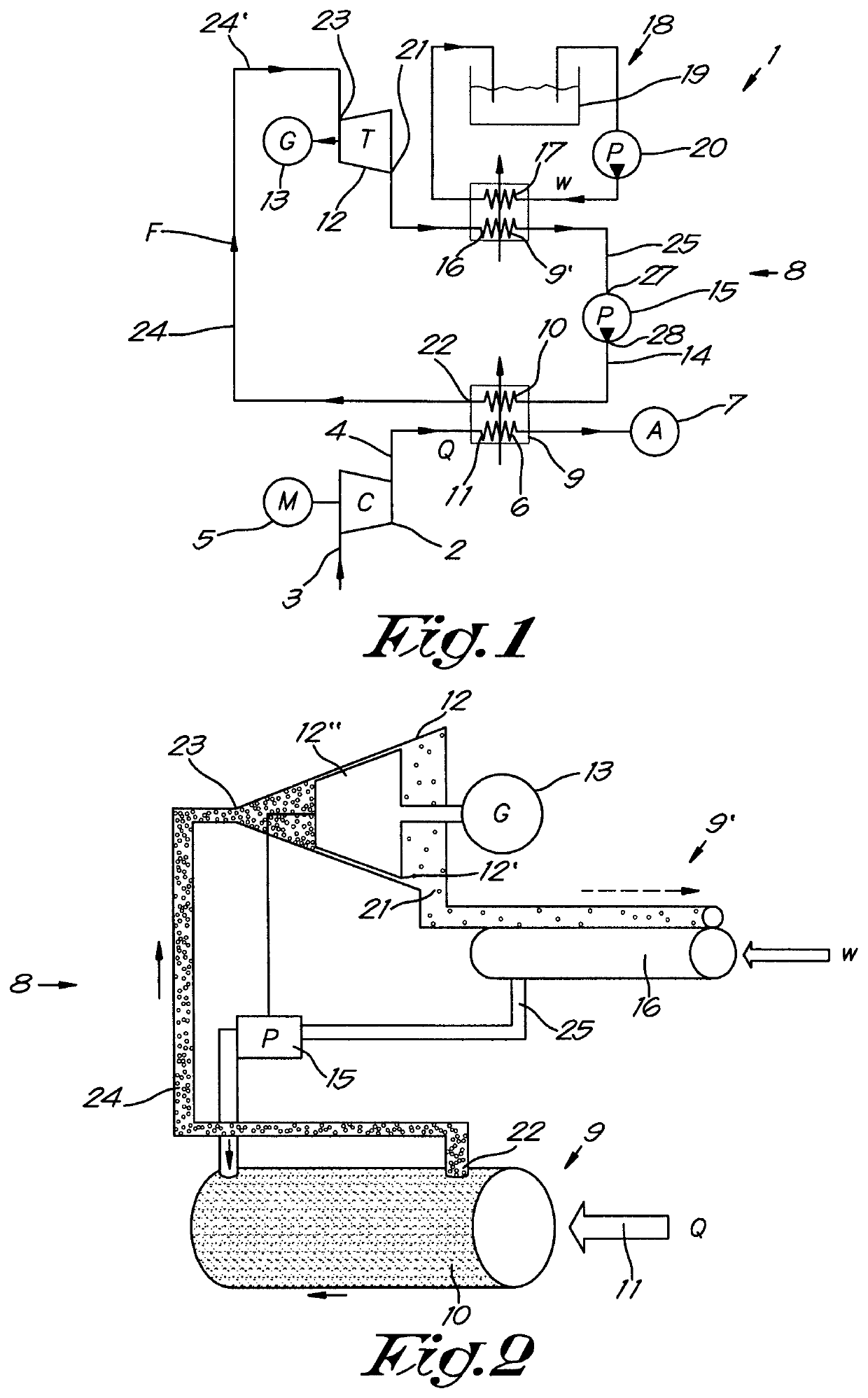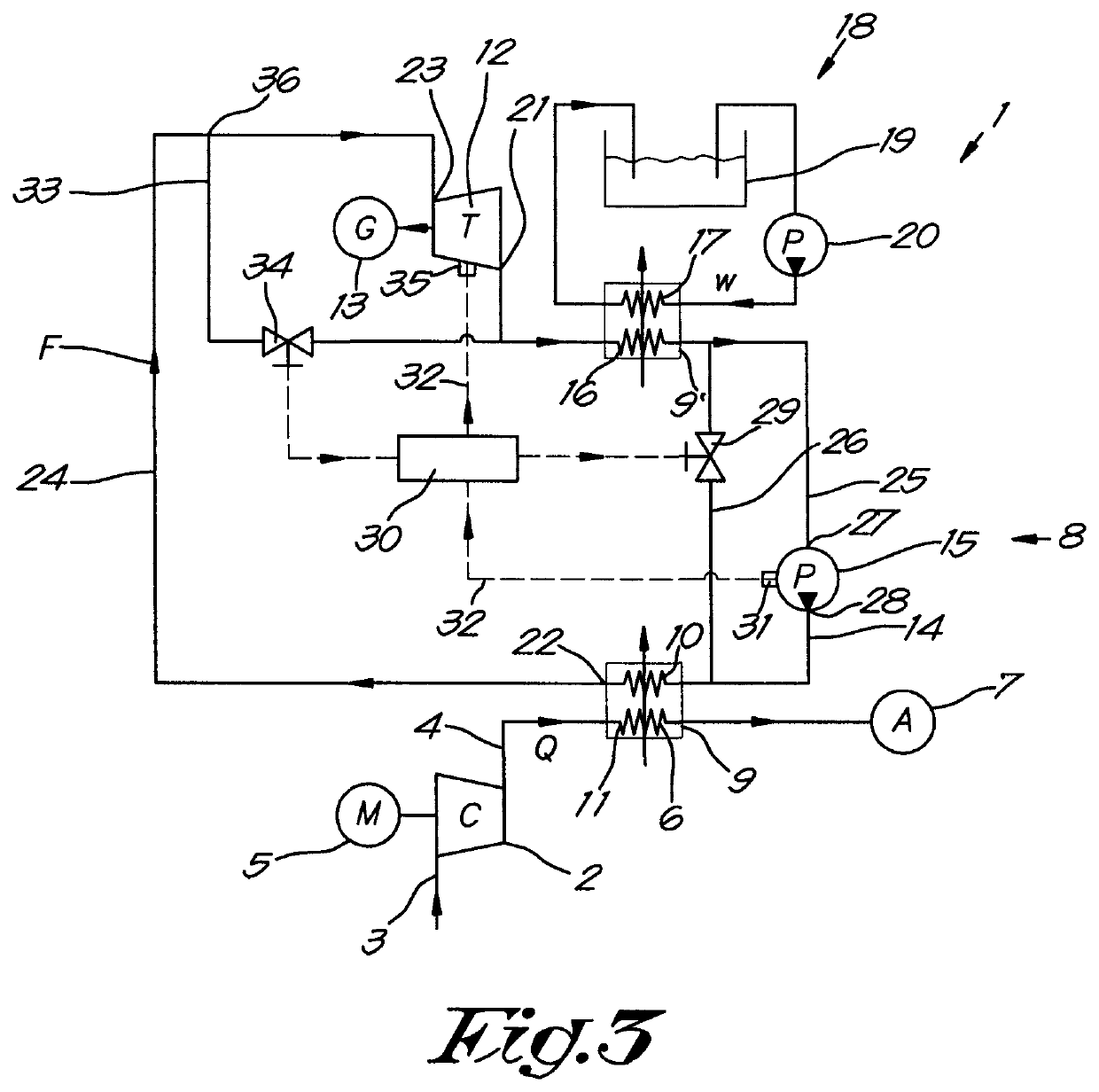ORC for transporting waste heat from a heat source into mechanical energy and cooling system making use of such an ORC
- Summary
- Abstract
- Description
- Claims
- Application Information
AI Technical Summary
Benefits of technology
Problems solved by technology
Method used
Image
Examples
Embodiment Construction
[0032]The cooling system 1 represented in FIG. 1 is a cooling system for cooling for example the compressed gas produced by a compressor installation comprising a compressor element 2 with an inlet 3 and an outlet 4, said compressor element 2 being connected to a motor 5 for driving the compressor element 2 for compressing a gas flow Q. Further, the cooling system 1 comprises a cooler 6, which is provided downstream of said compressor element 2, for cooling the compressed gas before it is supplied to a net 7 of consumers of compressed gas.
[0033]The cooling installation 1 comprises an ORC 8 according to the invention wherein the above-mentioned cooler 6 is integrated in a heat exchanger 9 which further integrates an evaporator 10 of the ORC 8 for recovering the waste heat of the compressed gas used as a heat source 11 being configured to transform said heat into useful mechanical energy by means of an expander 12 of the ORC 8, for example a turbine driving an electrical generator 13 ...
PUM
 Login to View More
Login to View More Abstract
Description
Claims
Application Information
 Login to View More
Login to View More - R&D
- Intellectual Property
- Life Sciences
- Materials
- Tech Scout
- Unparalleled Data Quality
- Higher Quality Content
- 60% Fewer Hallucinations
Browse by: Latest US Patents, China's latest patents, Technical Efficacy Thesaurus, Application Domain, Technology Topic, Popular Technical Reports.
© 2025 PatSnap. All rights reserved.Legal|Privacy policy|Modern Slavery Act Transparency Statement|Sitemap|About US| Contact US: help@patsnap.com


